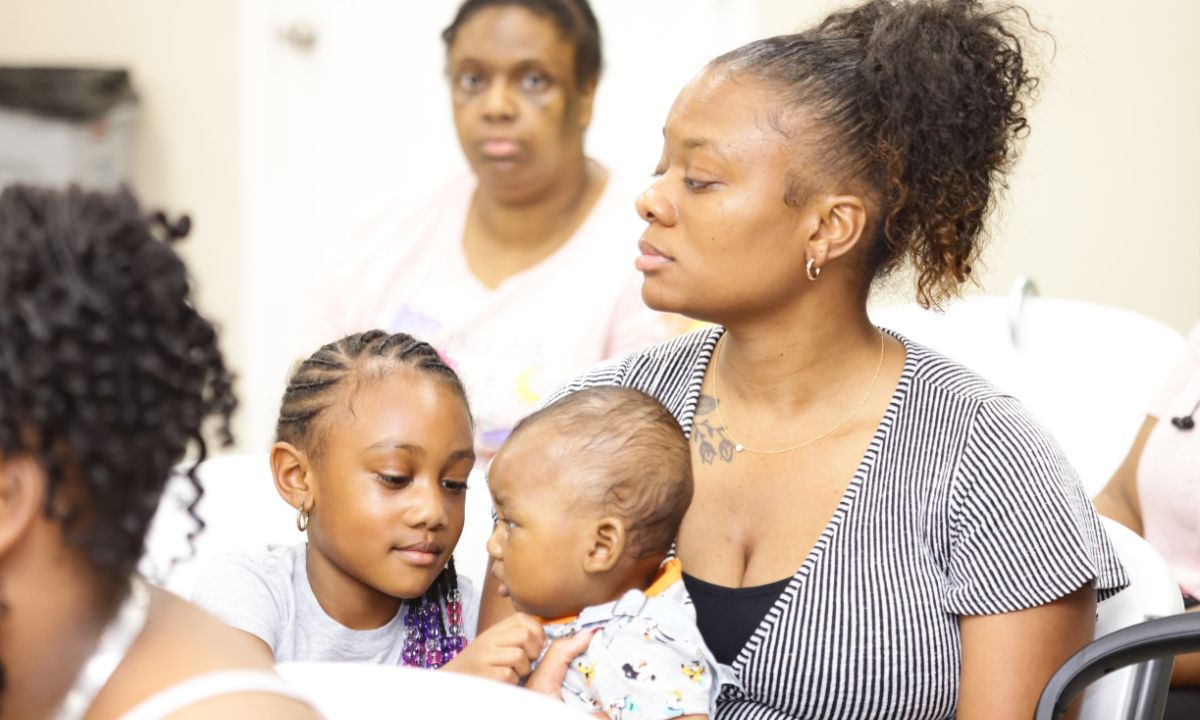Hustle Math: A Lesson in Reckoning with the Real Cost of Child Care
Baker: It’s time to build a child care system that reflects the true cost of care and the full value of early childhood education.

Join our zero2eight Substack community for more discussion about the latest news in early care and education. Sign up now.
The first time I heard the iconic line from the late hip-hop artist Tupac Shakur, “Trying to make a dollar out of 15 cents,” from his song Keep Ya Head Up in the early 90s, you couldn’t have convinced me he wasn’t talking about my mother. As a group family child care provider, her entire business model revolved around stretching every dollar — not just to support the families in her care, but to survive, feed her own family, and keep the lights on.
I was 12 years old, sent on an errand to the corner store with a colorful book of food stamps: payment my mother received from one of her families who didn’t have any other means. But there was a problem — one of the items on the list was diapers. Hoping to avoid the embarrassment of my friends seeing me with food stamps, I pushed back, reminding my mother that we couldn’t buy diapers with them. But she didn’t let me off the hook. She gave me strict instructions and told me I could keep the change from the diapers.
When I got to the store, I paid a few extra dollars — the hood tax, a familiar term used to describe the extra expense that often comes with shady transactions, and in this case, the cost of buying diapers with food stamps — just as my mother had instructed. Then I used the change for a red freezy and a bag of chips. As the owner counted the stamps, he mouthed the lyrics to Keep Ya Head Up, which was playing in the background: “Trying to make a dollar out of 15 cents.” As I ripped open the ice-cold treat, he sang the second part of the song, almost as if he was singing it directly to me, justifying our not-so-legal transaction: “It’s hard to be legit and still pay the rent.”
On my way out of the store, trying to reckon with my feelings of embarrassment and guilt, I realized just how deep the hustle had to go for families like mine to get by.
Years later, as founder and executive director of ImpactSTATS, I found myself reflecting on these memories while doing research for our most recent child care campaign. I learned that in Mississippi, it costs about $1,583 per month to care for an infant, yet the state subsidy pays only $658 per month — leaving a $925 shortfall per child, covering barely 40% of the true cost. This made me think about the cost my mother incurred to run her business.
From adequate staffing, supplies, meals, transportation, and the countless hours she put in, six days a week. she only netted about $300 a week. The child care subsidies, reimbursements from the government, only covered about six hours of care a day for each child, and the families who didn’t receive subsidized child care often paid a reduced rate. The math wasn’t mathing.
When I finally asked my mother that, she laughed and said, “You’re counting dollars and cents and forgot to factor in the hustle: It’s called Hustle Math.” She allowed parents who didn’t qualify for subsidies to volunteer at the day care in exchange for reduced fees. One single dad who owned a taxi company provided free transportation for her afterschool students. Another parent, who needed occasional respite from her special needs child, provided catering services from her Jamaican restaurant.
I also remember my mother continuing to provide care for a single mother in college even after a policy change cut off her child care subsidy. That mother finished her degree, became a speech-language pathologist, and later returned to offer free speech services to the children in my mother’s care, eventually paying premium rates and becoming one of her best customers.
I see my mother’s legacy in the children she helped raise, many of whom have gone on to college and successful careers. I also benefited tremendously from my mother’s day care. Not only did I learn hustle math, but I also became the first person in my extended family to earn a PhD. More importantly, I learned that every child deserves a nurturing start, regardless of family income. That principle laid the groundwork for my work at ImpactSTATS Inc., a nonprofit dedicated to advancing early childhood development, math education and economic justice.
Unfortunately, my mother’s story, and Mississippi’s, aren’t the exceptions. These huge disparities between the true cost of care and child care subsidies are all too common. Across the U.S., the “true” cost of quality care for an infant is, on average, 43% higher than what subsidy programs reimburse.
When subsidies fall short, someone still has to cover the difference — and it’s usually providers like my mom serving historically disadvantaged communities. If we truly want to rethink child care for the 21st century, we have to move beyond the idea that it’s just a private concern or an individual hustle. Child care is a public good: a critical foundation for a thriving society and a robust economy. It shouldn’t require parents to barter, providers to sacrifice their well-being, or children to rely on the extraordinary generosity of caregivers to get the start they deserve.
Instead, we need to invest in systems that support families and the dedicated professionals who care for their children. It’s time to build a child care system that reflects the true cost of care and the full value of early childhood education — one that doesn’t require our mothers to “make a dollar out of 15 cents.”
Get stories like these delivered straight to your inbox. Sign up for The 74 Newsletter


;)
